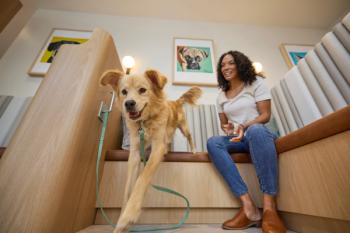
Does your hospital have sick-building syndrome?
The World Health Organization estimates that 30 percent of buildings exhibit sick-building syndrome. How can you tell if your hospital suffers from SBS? Your staff may complain of headaches; eye, nose, or throat irritation; itchy skin; dizziness and nausea; difficulty concentrating; fatigue; or sensitivity to odors--symptoms that disappear once a person leaves the hospital. Although such symptoms may indicate another illness, studies show that indoor air pollution can exacerbate health problems.
By Mark Hafen, AIA, and Margie Hughes
The World Health Organization estimates that 30 percent of buildings exhibit sick-building syndrome. How can you tell if your hospital suffers from SBS? Your staff may complain of headaches; eye, nose, or throat irritation; itchy skin; dizziness and nausea; difficulty concentrating; fatigue; or sensitivity to odors--symptoms that disappear once a person leaves the hospital. Although such symptoms may indicate another illness, studies show that indoor air pollution can exacerbate health problems.
Some of the materials that contribute to indoor air pollution include:
Plastic doors
Treated wood foundations
Vinyl windows
Particle board (unless sealed or formaldehyde-free)
Oil-based paint
Asphalt roofing near windows
Vinyl or asbestos cement siding
Laminated wood paneling
Epoxy or petrochemical-based sealer
Urea formaldehyde foam or asbestos insulation
Soft vinyl flooring
Wall-to-wall carpet
Carpet, panel, and construction adhesives
Unsealed interior-grade plywood cabinetry
Galvanized steel supply pipe.
What causes SBS?
These factors, along with inadequate temperature, humidity, or lighting, can cause discomfort:
Inadequate ventilation. Many heating, ventilation, and air-conditioning (HVAC) systems don't distribute air evenly throughout the building, creating high pollution levels and contaminated air pockets.
Indoor pollutants. Pollutants inherent in veterinary clinics include anesthetic gases, gases emitted during X-ray processing, copy-machine exhaust, disinfectants, and pesticides. When these pollutants mix with emissions from adhesives; carpeting, vinyl, or rubber flooring and molding; and manufactured wood products, they may cause illness.
Outside pollutants. Car exhaust, plumbing ventilation, or building and toilet exhaust may re-enter your building through improperly located air intakes and windows. Combustible products, including carbon monoxide and nitrogen dioxide from gas-fired, roof-top HVAC units, may also recirculate.
Biological contamination. Bacteria, mold spores, pollen, and viruses breed in the stagnant waters often found in HVAC systems. Other sources: soiled packs, drapes, and equipment, and mildew on damp ceilings, walls, or floors.
How do you treat SBS?
If you discover your hospital suffers from SBS, you'll need to do the following:
1. Flush your building. After completing any significant construction project and before moving in, flush your building with outside air. Initially set the HVAC system to provide only outside air without recycling indoor air.
2. Increase ventilation and exhaust. This is the most cost-effective way to reduce pollution. The American Society of Heating, Refrigerating, and Air Conditioning Engineers proposes a minimum ventilation rate of 15 cubic feet a minute for each occupant.
Exhaust specific air pollutants directly. For example, an active gas scavenger system, which costs $500 to $1,500, can reduce the danger posed by anesthetic gas. A small exhaust fan in your recovery room helps animals purge anesthetic gas as well.
Also install fans in fecal preparation laboratories, dental or "dirty prep" areas, darkroom, copy-machine rooms, wards, and runs. Place one fan adjacent to the autoclave to capture vented vapors. Coordinate the locations of air intakes and outlets to avoid drawing materials back into your building.
3. Install an air-filtration system. Ordinary furnace filters capture visible particles like dust but miss pollen and bacteriologic and viral organisms. High efficiency particulate airflow (HEPA) filters capture up to more than 99 percent of these organisms and isolate contagious diseases. However, HEPA filters require frequent cleaning or replacement and can be costly. What's more, you'll need an HVAC system that compensates for increased resistance of air mobility. Electrostatic filters are available with varying degrees of effectiveness.
January 1997 Veterinary Economics
Newsletter
From exam room tips to practice management insights, get trusted veterinary news delivered straight to your inbox—subscribe to dvm360.




